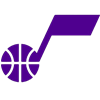These rankings will change, potentially quite a bit depending on what info we get from the combine and remaining DOB disclosures. I might also need to change things depending on who does or doesn't declare as underclassmen. I don't know what to make of the Justyn Ross situation, but if he gains medical clearance you can place him in Tier 2 wherever. These rankings are specifically with fantasy point potential in mind, so it tries to balance projected per-snap production with plausible playing time opportunity.
These rankings are broken into eight tiers.
Tier 1
1. Ja'Marr Chase, LSU (6-0, 208) (3/1/2000)
No conditional statements necessary: Chase is a monster. Perhaps he won't be the best wide receiver in this class, but he'll be very good to some extent or another, and he's absolutely the top prospect of this group going into the combine. If Bruce Feldman's reporting is to be believed (it usually is), then at 6-foot, 208 pounds Chase should run around a 4.40 40, so there's no reason to think Chase will lose footing at the combine.
Justin Jefferson was the 22nd overall selection in the most recent draft, and for good reason. Chase was the better of the two in 2019 all the same, and Chase is about nine months younger than Jefferson. In the best college football offense of all time, Chase was its best pass catcher, propelling a big share of the receiving yardage volume (29.6 percent) and touchdown volume (32.8 percent) on just 22.2 percent of the team targets. LSU completed 75.1 percent of its pass attempts at 10.6 yards per attempt, where Chase's catch percentage (66.7 percent) deficit of 8.4 points is washed away by Chase's absurd average of 14.1 yards per target. To produce yardage that explosively while scoring touchdowns at that rate is barely even theoretically possible, but Chase did it at 19.
Don't overthink it – Chase is different.
Projected round: 1 (Top 15)
Tier 2
2. Jaylen Waddle, Alabama (5-10, 182) (11/25/1998)
Waddle's ankle injury was horrifying, but I'm choosing to be blindly optimistic about his recovery for now. If concerning details emerge then that might change. Waddle was incredibly productive in each of his three years at Alabama, including a 2018 season where he caught 45 receptions for 848 yards and seven touchdowns on 61 targets at about 20 years old. That's a 73.8 percent catch rate at 13.9 yards per target in an offense that completed 68.7 percent of its passes at 11.1 yards per attempt. Because Waddle produced so well at that underclassmen age, the fact that he's relatively old among the top-ranked wideouts doesn't matter to me. Age matters when it cheapens a prospect's production to some concerning extent, and that obviously isn't the case here. It's in any case important to note that Waddle outproduced teammates Henry Ruggs and De'Vonta Smith that year, and there's reason to believe Smith is an uncommonly good receiver prospect.
Projected round: 1
3. DeVonta Smith, Alabama (6-1, 175) (11/14/1998)
Smith's age is a non-factor for the same reason it is with Waddle – any age adjustment penalty to his production still leaves it with an elite grade. These rankings mostly break the tie between the two by the fact that Waddle appears to have better speed, especially when adjusted for density, and also because Waddle did outproduce Smith in 2018. But Smith's production is fully convincing otherwise, and there's nothing in his tape that suggest anything concerning about his athleticism.
Projected round: 1
4. Terrace Marshall, LSU (6-3, 200) (6/9/2000)
Everyone seems to acknowledge that Marshall is some form of 'good' but it just as much seems that he's often omitted from the conversation when we're talking first-round picks in this class. Marshall was a five-star recruit who was exceptionally productive at LSU, standing out even while playing next to Justin Jefferson and Chase. Marshall produced an outrageous 13 touchdowns on 66 targets in 2019, otherwise catching 46 receptions for 671 yards (69.7 percent catch rate, 10.2 YPT), and in 2020 he was probably even better. In those seven games LSU threw for 2,194 yards and 17 touchdowns, completing 60.2 percent of their passes at 7.6 yards per attempt. Marshall drew 70 targets, catching 48 for 731 yards and 10 touchdowns (68.6 percent caught, 10.4 YPT).
Projected round: 1
5. Chris Olave, Ohio State (6-1, 188) (6/27/2000)
Ohio State sometimes makes it difficult for its younger wideout prospects to earn snaps, but Olave has easily drawn high snap and target volume through his first three years. At 19 he led Ohio State in receiving yardage (849) and touchdowns (12) on just 76 targets, outplaying Austin Mack and fifth-year senior K.J. Hill in 2019, both of whom were on NFL rosters this year. In 2020 Olave's production went up another level yet, turning 41 targets into an absurd 36 receptions for 528 yards and five touchdowns. Olave might have some Justin Jefferson to him – he doesn't obviously jump out on tape like some other top receivers, but exceptional talent is just about the only viable explanation for production like his.
Projected round: 1
Tier 3
6. Amon-Ra St. Brown, USC (6-1, 195) (10/24/1999)
There might be some Christian Kirk risk with St. Brown – he might see his returns diminish somewhat if forced to play outside – but as a slot-centric wideout prospect St. Brown seems almost infallible. Perhaps his athleticism isn't the sort to drive star power, but his skill set polish is off the charts, and let's not rule out the possibility of upside so quickly. As a true freshman at age 18-19 St. Brown basically matched the production of then-junior Michael Pittman, who turned 21 that October. Pittman caught 41 of 78 targets that year for 758 yards and six touchdowns (52.6 percent catch rate, 9.7 YPT) while St. Brown drew 84 targets, catching 60 for 750 yards and three touchdowns (71.4 percent catch rate, 8.9 YPT). The USC offense that year completed 60.7 percent of its passes that year at 7.4 yards per attempt, meaning St. Brown not only outproduced the older Pittman, but he also produced far above the USC baseline both in catch rate (10.7 percent) and per-target yardage (1.5). For now, I'm fixating on that data point.
Projected round: 1-2
7. Rashod Bateman, Minnesota (6-2, 210) (11/29/1999)
Bateman is a tough evaluation for me. I'm open to the idea that he's a star-level talent, but I don't think the evidence is as strong as in the previously mentioned six cases. Bateman's production at Minnesota is strong, it's just that the same was true about Tyler Johnson and the NFL didn't really care. Bateman can place higher than this with standout athletic testing.
Projected round: 1-2
8. Rondale Moore, Purdue (5-9, 181) (6/9/2000)
I'm afraid to list Moore this low. He's highly athletic and highly productive, to memorable extents in both respects. I only list him this low because he's likely to measure in at around 5-foot-8, though his legendary weightlifting acumen has him well-built for the frame – at least 180 pounds and maybe more like 190 come combine time. Still, a 5-foot-8 frame could limit him to the slot in the NFL, and worst-case examples like Greg Dortch and Jakeem Grant exist of dominant collegiate players who were limited in the NFL due to their small frames. Although listed at 5-9, Feldman referred to Moore as 5-8 in his 2019 Freaks article.
Then again, Grant never produced like Moore did, and Dortch is nowhere near the athlete that Moore is. Moore's true freshman season in 2018 was one of the best in college football history, as he took on enormous volume burden, catching 114 of 160 targets for 1,258 yards and 12 touchdowns, somehow fitting in another 213 yards and two touchdowns on the ground on 21 attempts. That's a catch rate of 71.3 percent at 7.9 yards per target in an offense that completed 65.4 percent of its passes at 7.9 yards per attempt, and at huge shares of the receptions (34.2 percent), yardage (31.5 percent) and touchdowns (42.9 percent) on 31.4 percent of the team's total targets. Although it's not far above baseline efficiency, it's still remarkable that Moore carried such volume after only turning 18 less than three months before his first game.
Projected round: 1-2
9. Dyami Brown, North Carolina (6-0, 185) (11/1/1999)
I'm definitely open to ranking Brown higher than this – he might be something like another Will Fuller, depending on how his athletic testing turns out. Dazz Newsome was a good receiver for North Carolina the past two years, but at about six months younger Brown was safely above the baseline of the North Carolina passing game while Newsome played the lower-difficulty slot role.
Projected round: 1-2
10. Amari Rodgers, Clemson (5-10, 210) (9/23/1999)
Rodgers' height says 'slot' but his build and pedigree indicate a three-down player at the next level. Rodgers' age-adjusted production is excellent and he produced at or above baseline despite his youth and despite the incredibly high standard of play set by Tee Higgins and Justyn Ross. When you match a baseline set by those two I'm inclined to grant the benefit of the doubt. Rodgers was clearly a better player at 19 years old than Hunter Renfrow was at nearly 23 years old in the same 2018 offense.
Projected round: 2-3
11. Tylan Wallace, Oklahoma State (6-0, 185) (5/13/1999)
Wallace is more proven than Dyami Brown as an underneath and intermediate receiver but is slightly older, probably less athletic, and the owner of a more concerning injury history. Wallace's age-adjusted production is generally excellent, though, and he's absolutely a candidate to rank much higher than this pending medicals and workout numbers.
Projected round: 2-3
Tier 4
12. Anthony Schwartz, Auburn (6-0, 179) (9/5/2000)
Schwartz can burn – his speed is uncommon to the point that an NFL team should find 350 or more snaps for him without thinking too hard about it. His skill set is less convincing, but Schwartz has been decently productive enough, and in 2020 one could even argue that he outplayed esteemed teammate Seth Williams.
Projected round: 2-3
13. Tamorrion Terry, Florida State (6-4, 210) (3/21/1998)
Terry is a bit older than I'd prefer in a prospect and his catch rates were brutal at Florida State – always below baseline – but his per-target yardage output was so far above team baseline that it more than offsets the catch rate deficiency. Crucially, there's reason to believe Terry will be among the best athletic testers in this draft, making him a potential Denzel Mims-like prospect. Terry had a meniscus issue in 2019 that might be worth following up on.
Projected round: 2-3
14. Nico Collins, Michigan (6-4, 215)
According to Bruce Feldman, Collins runs in the 4.4 range in the 40, in which case he'd project safely as a viable starter for me (pending DOB info). Donovan Peoples-Jones playing well as a rookie is a bit reassuring for Collins' projection and does something to offset the otherwise valid concern about Collins' modest yardage share numbers. Collins was supremely efficient at Michigan and notably outproduced DPJ, but modest usage volume sometimes indicates the risk of only situational effectiveness.
Projected round: 2-3
15. Kadarius Toney (6-0, 193) (1/27/1999)
A growing number of people have expressed extreme fondness for Toney in recent weeks, but I'm a little skeptical. Toney's production in 2020 was undoubtedly excellent (70 receptions for 984 yards and 10 touchdowns on 84 targets, 19 carries for 161 yards and one touchdown), but at nearly 22 years old production like that was a minimum requirement for more than Day 3 consideration. He shows a lot of speed and open-field running ability on tape, making him a memorably entertaining player to watch in highlights, but he's largely untested outside of jet sweep and screen-type functions. Toney could be the Brandon Aiyuk of this draft, but in the meantime I think he's a bit of a project risk even if he torches the combine as expected. Parris Campbell was also a similar genre of prospect but was more productive and was likely a better size-adjusted athlete than Toney.
Projected round: 2-3
Tier 5
16. Elijah Moore, Mississippi (5-9, 185) (4/27/2000)
If you could guarantee me 800 snaps per year for Moore then I'd rank him higher than this. As things stand, though, there's some risk that Moore is largely regarded as a slot specialist. His production at Mississippi implies he will produce reliably with whatever snaps he gets, but it might cap his snap count if he can't earn two-wide snaps or if his drafting team otherwise declines to run three-wide snaps at a high rate. The higher his draft slot projection, the less we need concern ourselves with that question – if someone takes Moore high then it's likely because they plan to get him those snaps.
Projected round: 2-4
17. Marlon Williams, UCF (6-0, 215)
Williams is interesting especially in light of Gabriel Davis' impressive rookie season in Buffalo. Williams has been incredibly efficient through his four-year UCF career, but he never took a leading role until 2020. As much as you'd prefer to see Williams break out earlier, he might deserve the benefit of the doubt – his 2019 volume (51 receptions for 717 yards and six touchdowns on 68 targets) wasn't half bad, and he totally crushed his audition as a WR1 in 2020. He caught 71 receptions for 1,039 yards and 10 touchdowns on 105 targets in eight games with Davis in the NFL, giving him a catch rate of 67.6 percent at 9.9 yards per target in an offense that completed 61.7 percent of its passes at 9.1 yards per attempt. That's above-baseline efficiency while carrying 34.4 percent of the team's receiving yardage. Williams caught 71.7 percent of his career targets at a compelling 10.3 yards per target and is probably a bit overlooked.
Projected round: 3-4
18. Keylon Stokes, Tulsa (6-0, 194) (10/18/1999)
Stokes caught his first college football receptions about a week before turning 18, taking two catches for 70 yards against Tulane on Oct. 7 of 2017. He didn't play much the rest of that season but as a sophomore he was highly impressive in a dreary offense, catching 41 of 73 targets for 575 yards and two touchdowns – that's a 56.2 percent catch rate at 7.9 yards per target in an offense that completed only 53.9 percent of its passes at 6.7 yards per attempt. Turning 19 in season, Lucas outplayed the Tulsa baseline for both catch rate and per-target yardage while leading the team in receptions (24.0 percent share) and receiving yardage (27.1 percent) on 23.0 percent of team targets. Stokes has otherwise produced far above Tulsa's baseline in each of the last two years.
Projected round: 3-4
19. Seth Williams, Auburn (6-3, 211)
Williams is a guy who could move up my board pending DOB info, workouts and medicals. Darius Slayton is a good starting receiver in the NFL, and as a true freshman in 2018 Williams more or less matched the production of Slayton – producing less volume but with much better efficiency. Williams was a little less efficient once the spotlight went on him in 2019, but he was still decent with 59 receptions for 830 yards and eight touchdowns on 112 targets. That's a catch rate of 52.7 percent at 7.4 yards per target in an offense that completed 56.8 percent of its passes at 6.7 yards per target – baseline production more or less. Williams' 2020 production fell a bit under the Auburn baseline, but the quarterback play might have undermined Williams' downfield abilities, not unlike with Slayton and Jarrett Stidham.
Projected round: 3-4
Tier 6
20. D'Wayne Eskridge, Western Michigan (5-9, 190) (3/27/1997)
Eskridge is old for a prospect, to the point that his otherwise incredible 2020 production isn't necessarily meaningful, but I think there's reason to take a leap of faith in him as a fourth-round type of prospect if his timed speed is reliably reported. LeVante Bellamy turned out to be a falsely-reported hype case from the same school, so we can't take the numbers for granted, but Eskridge is supposed to be able to run a 40 around 4.35 seconds. If he can run that fast at 190, his lack of height would be offset by the uncommon density-adjusted speed. The age concern is offset somewhat by the fact that Eskridge produced at an above-baseline level in his age-21.5 season in 2018, but it's a reasonable concern all the same
Projected round: 3-5
21. Marquez Stevenson, Houston (6-0, 190)
This might be too low for Stevenson -- he can really burn and his production was not bad at all at Houston. If Stevenson runs a mid-4.3 or better you can probably assume the Day 2 end of this round projection
Projected round: 3-5
22. Jhamon Ausbon, Texas A&M (6-2, 220)
Ausbon is a former five-star guy who was reasonably productive at Texas A&M. He heads into this draft as a mid-round consideration -- he probably won't test all that great athletically but Ausbon seems to have a good feel for navigating zones from the slot. A 220-pound frame with a slot-friendly skill set is a good way to get yourself on the field.
Projected round: 3-5
23. Reggie Roberson, SMU (6-0, 200)
A former West Virginia recruit who stood out SMU, Roberson is a better prospect than James Proche was last year. Roberson does have a concerning injury history, though, so that will need to be monitored.
Projected round: 3-5
24. Whop Philyor, Indiana (5-11, 180) (7/31/1998)
Perhaps this is too high for Philyor -- he's a slot-centric receiver with an injury history who struggled to produce in 2020 -- but his 2019 season was exceptional and he seemed pretty fast on tape.
Projected round: 3-5
25. Dazz Newsome, North Carolina (5-11, 190) (5/15/1999)
Newsome is the kind of guy liable to get passed over since he lacks star power, but he was a productive player at North Carolina and has a frame just big enough to qualify for either slot or outside snaps. That gives him a bit higher of a floor than most slot-centric prospects.
Projected round: 3-5
26. Warren Jackson, Colorado State (6-6, 210) (6/16/1999)
Collin Johnson showed what a 6-foot-6 receiver can do if he has some talent to go with the frame, and it sure seems like Jackson is one such case. He'll need to test decently to earn more than mid-round consideration, but his production was solid at Colorado State, where he more or less hovered around the high standard of play established by recent prospects like Rashard Higgins, Michael Gallup and Preston Williams.
Projected round: 3-5
27. Josh Imatorbhebhe, Illinois (6-2, 220) (4/12/1998)
Imatorbhebhe is a little goofy and his production implies he's more of a complementary receiver than one with featured pass-catching upside, but his athleticism will grade at the top of the class -- a Donovan Peoples-Jones sort of combine is fully expected.
Projected round: 3-5
Tier 7
28. Tutu Atwell, Louisville (5-9, 165) (10/7/1999)
Feldman reports that Atwell can run a sub-4.3 40, which he might need to do if he's going to weigh in at only 165. Atwell has some skill and a lot of speed -- that's a good starting point -- but a weight of 165 or less might pass a problematic threshold. If Atwell can weigh in more like 175 and still burn up the track then what you have is a decent Marquise Brown starter kit.
Projected round: 3-5
29. Jaelon Darden, North Texas (5-9, 174)
He'll need to test well athletically to stay viable, but Darden's production and tape at North Texas is kickass and he can clearly do damage with targets. What's less clear is whether he'll get an opportunity to show it -- a bad weigh-in and combine could wipe out his stock.
Projected round: 4-6
30. Justin Hall, Ball State (5-9, 186) (1/29/1999)
Like Darden, Hall is a small school slot specialist but one with utterly convincing production. Hall is listed at a legitimately dense weight, moreover, so if he tests well as an athlete there wouldn't really be anything left to question about him. For now, his obscure origins threaten to undermine him, but Hall can play.
Projected round: 4-6
31. Antonio Nunn, Buffalo (5-11, 200)
Nunn has been exceptionally productive for Buffalo the last two years, so despite this modest ranking he has starter-level NFL upside if he can test well athletically. I have no idea what to expect on that front, unfortunately.
Projected round: 4-6
32. Shi Smith, South Carolina (5-10, 190) (10/26/1998)
Smith is probably a slot receiver in the NFL for the most part, but his frame is bigger than some of his slot specialist peers and so he might earn a swing backup roster spot. Smith's skill set is likely sound -- his production was strong at multiple points in his South Carolina career -- but the fact that he never challenged Bryan Edwards for volume generally makes Smith look more like a rotational player than a featured one in the NFL.
Projected round: 4-6
Tier 8
33. Ty Fryfogle, Indiana (6-2, 214) (1/28/1999)
Fryfogle is sort of nondescript trait-wise and his production is less than compelling, but his 2020 production reached a new level and his work before that certainly wasn't bad. Particularly if Whop Philyor turns out to be good, Fryfogle might have enough to earn NFL snaps in the next couple years.
Projected round: 5-7
34. Damonte Coxie, Memphis (6-3, 200)
Coxie was a good player at Memphis -- perhaps this is too low for him. But for as much as his production implies a good skill set, I'm not sure he has the traits for his skill set to manifest as well in the NFL. Good athletic testing or/and a bulkier weigh-in than expected would potentially change my mind.
Projected round: 5-7
35. Jonathan Adams, Arkansas State (6-3, 220)
Interesting frame and production numbers, but Adams will need to test well athletically given that he was less productive than Omar Bayless, who went undrafted last year.
Projected round: 5-7
36. Tyler Vaughns, USC (6-2, 190)
Vaughns typically took a back seat to USC's more obvious star talents at receiver, but he was productive for four years and should project well as a swing backup.
Projected round: 5-7
37. Sage Surratt, Wake Forest (6-3, 215) (4/13/1998)
Surratt had good production in 2019 after posting poor production in 2018. Doesn't show much athleticism on tape in my opinion and his shoulder might be a concern. If there's one generally well-liked receiver in this draft who might shock with an undrafted outcome, Surratt might not be a bad bet.
Projected round: 5-7
38. Michael Strachan, Charleston (6-5, 205)
Don't know much about him but Strachan is big and has been exceedingly productive for Charleston.
Projected round: 5-7
39. Kaylon Geiger, Troy (5-10, 170) (11/1/1997)
I'm convinced Geiger has a lot of ability as a slot receiver, but I don't know if a tiny small school guy like him will get a shot to show it.
Projected round: 6-UDFA
40. Racey McMath, LSU (6-3, 224) (6/14/1999)
Feldman reported McMath can run a sub-4.4 40, which would make him an interesting project given his uncommon frame.
Projected round: 6-UDFA






































